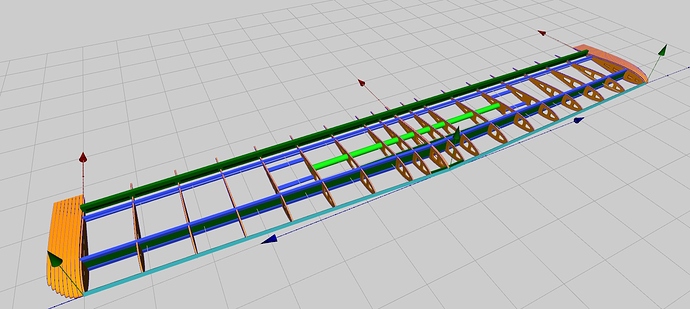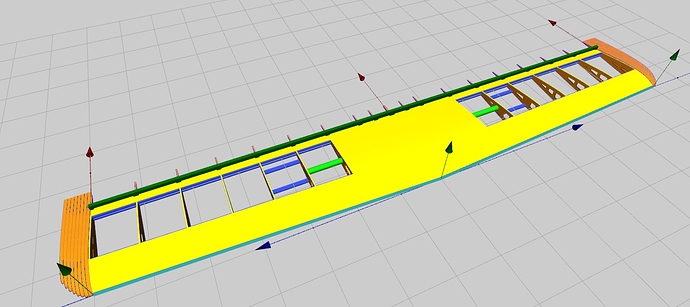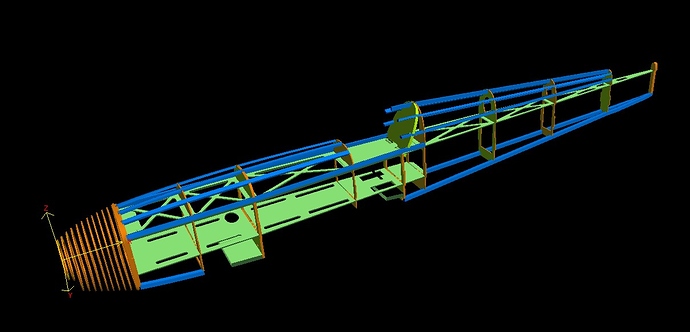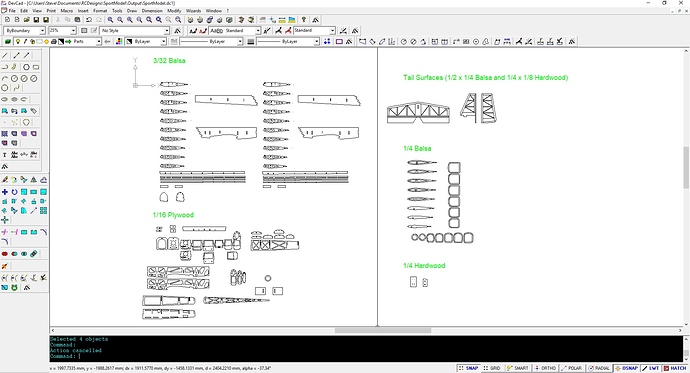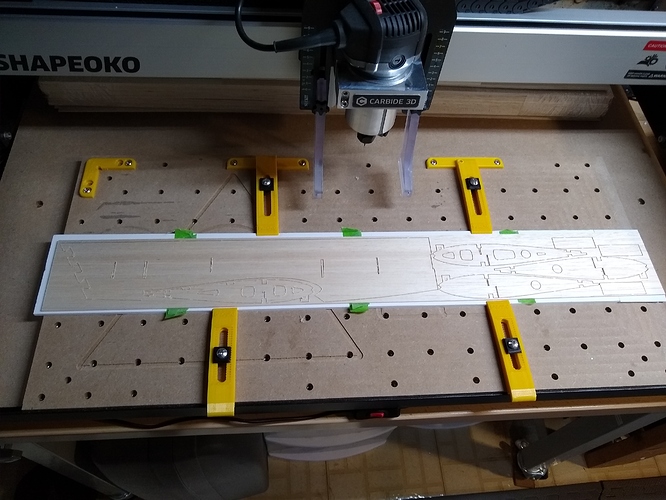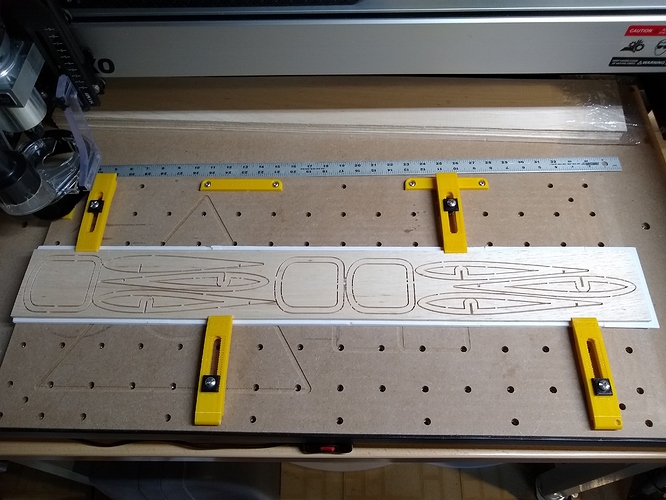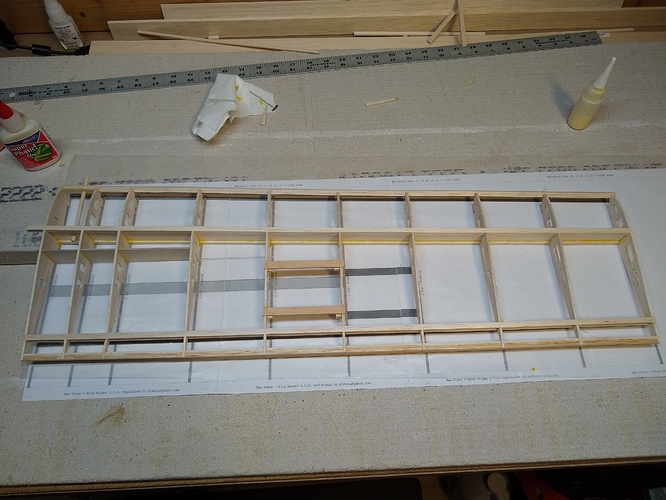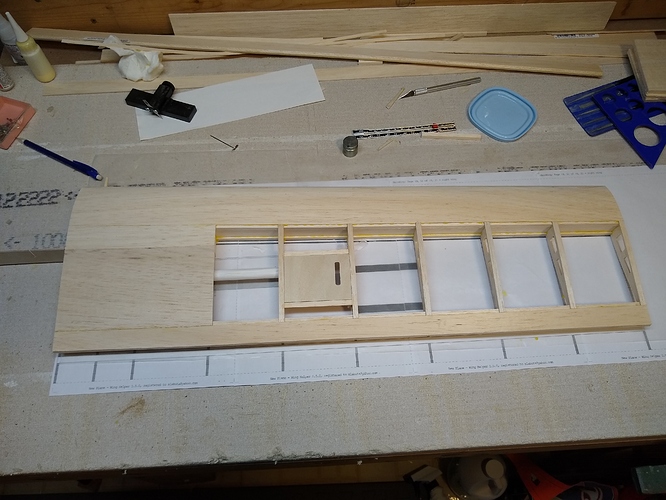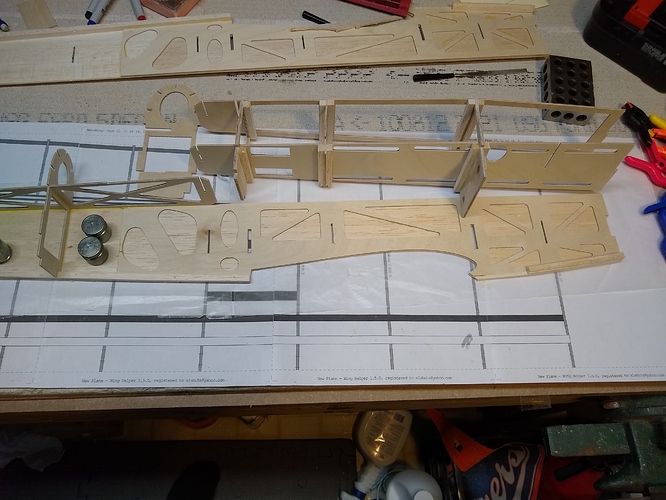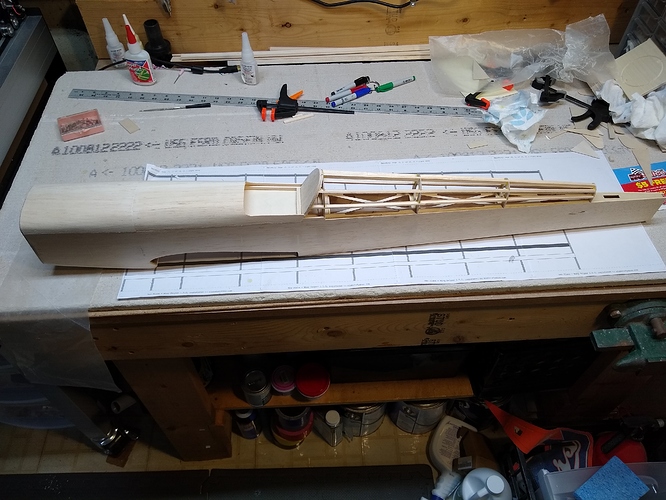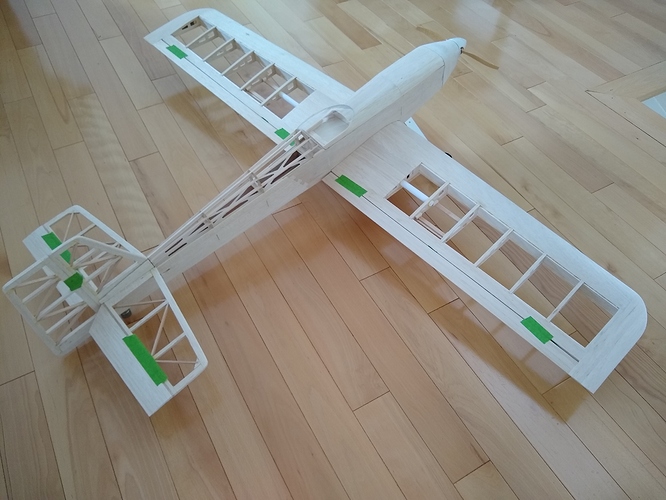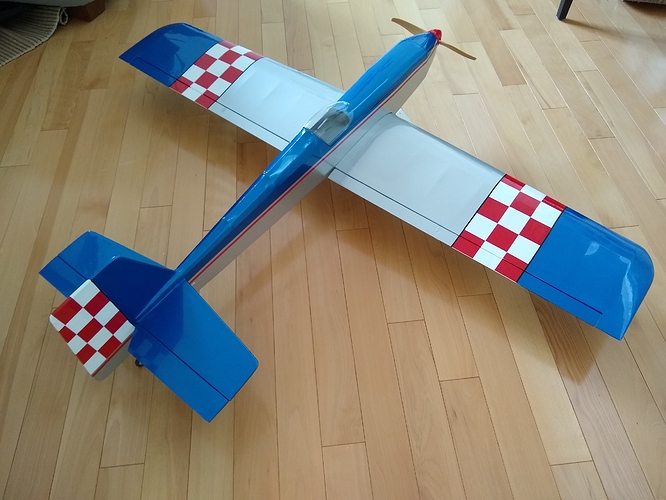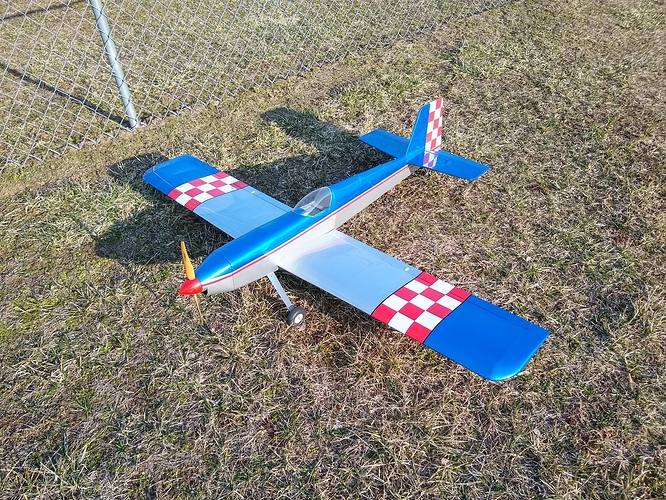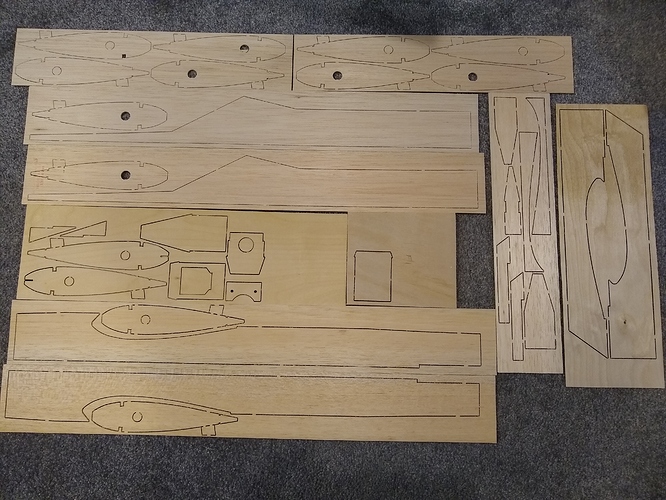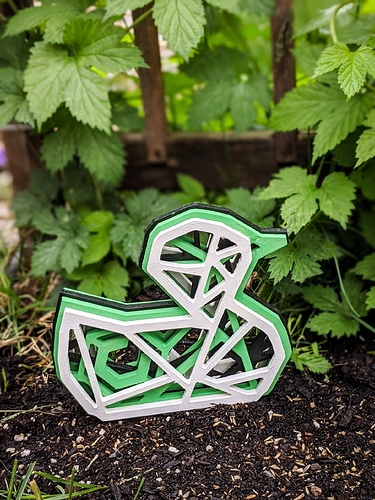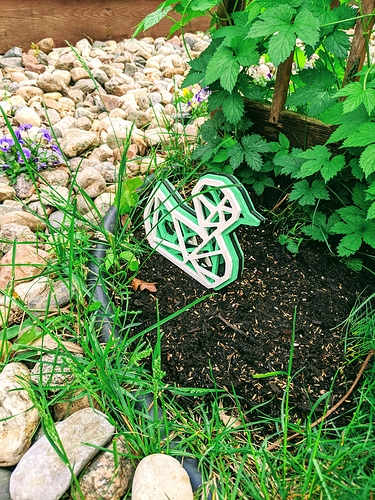makes me wonder about an stl2svg tool 
Well that would be certainly be quite useful for the community and this contest  (hint hint)
(hint hint)
For anyone that hasn’t tried it, I have had very good success with Slicer for Fusion360
It makes those crazy awesome sculptures quite simple
So 2d only or can we use something like slicer on a 3d model… would still yield sheets being cut and assembled but some parts could possibly have 3d machining on them as well…
That’s fine, and I expect several entries to be based on the Fusion360 slicer (I may have one of those in the works myself  )
)
RC Sport Plane
I am not sure if this project qualifies for this contest. The design work was performed Nov-Jan, parts were cut in Jan – Feb and assembly happened in Feb and March. If not, I can delete this and just move it to the project gallery. Let me know.
Here’s my method of using the Shapeoko to cut 2D parts to create a 3D RC plane! This is a project that has been in the works since last November when I bought an XL machine. This is the second plane I have designed but the first one where I cut out the parts on the Shapeoko.
Designing:
I first decided on the basic parameters. For this build I wanted to create a good all-around sport plane to fly at my local RC field with others. I wanted a mid-sized plane that is easy to cart around and store. And electric powered like all of my planes and able to use batteries and other components that I already have. I wanted to use 3/32 and ¼ in balsa and 1/16 in plywood for the main construction materials. Based on other existing designs and knowledge, this lead me to a plane with a 55-60 in wingspan and a target weight of 4 to 5 pounds.
I used 3 different programs to help with the designing. WingHelper (https://www.winghelper.com/default/) , devFus and devCad CAM-Pro (http://www.devcad.com/eng/default.asp) I started in WingHelper to create the wing. This program basically allows you to specify and visualize a wing on the computer and will generate the needed parts in a DXF file. You can specify almost any airfoil and many different wing configurations. I settled on a 59 in span with an overall wing area of 577 sq-in.
I used devFus for the basic fuselage design. Overall length and width determined by fitting in existing components and basic RC plane design theory for my chosen plane type. (There are many good books…) Like WingHelper, you specify many parameters and can “see” the design on the computer in 3D. I then outputted the needed 2D parts in DXF format.
Final designing was done in devCad. It’s a general purpose 2D cad program. I fixed and change things that I was unable to do parametrically before. I also created the stabilizer and rudder.
SportModel.dxf (1.5 MB)
I also used devCad to do the CAM work. It has wizards to help with parts layout and creating the tool paths. They work quite well and you can change anything that isn’t exactly that you want. I did not use the auto generated tab feature because they were too often placed in a poor place. It was quicker to assign them individually. devCad supports a number of gcode post processors. There is not one specific for the Shapeoko, but the generic GRBL one works fine with Carbide Motion and the Shapeoko.
Cutting:
All parts were cut on my Shapeoko XL using Carbide Motion. The parts made from 3/32 balsa and 1/16 ply were cut using the tiny Carbide3D 1/32 flat endmill (#122). The ¼ in balsa was cut with a 1.5 mm flat endmill that has an 8mm cutting height. One thing I was worried about was breaking these small endmills in the waste board. What I did was use a piece of Dollar Tree foam board as a supplemental waste board. This worked fine but my depth of cuts needed to be extended some to cut all the way thru all of the parts. I guess the foam is not 100% flat. I used the tape and CA method to hold down the ply and it work well. I tried the same for the balsa, but it would break when trying to remove the tape after cutting, so I just clamped them down together. I copied the default softwood cutting settings for my endmills found in Carbide Create into the devCad software for use. I was able to increase the cutting speeds while cutting in Carbide Motion by at least 50% with no problems. Since I was more concerned with the quality of the cuts, I did not try to speed up any faster than this. I am sure I could probably still double the cutting speeds.
Assembly:
Started with the wing. It’s built mainly with the 3/32 balsa parts. Assemble the framework ½ wing at a time. Sheet the bottoms, join together and add the wing tips. Strictly glued together mainly with Titebond and some CA when a quick hold is needed.
Fuselage assembly is a lot like the wings. A lot of self-aligning and tabs… Again glued together mainly with Titebond. Some CA and Epoxy as well.
Final Assembled Structure:
I used iron on covering for the finishing. It’s light weight plastic film with adhesive on the back. Final flying weight is a little under 4 lbs. I have now flown a couple of times and it flies pretty well! Still some tweaking to do, but I am sure I’ll be flying it for years to come.
After the first flight. Still in one piece!
Well…, enjoy the clamps! 
That is beyond cool. Awesome documentation and final product.
Awesome, just awesome…there could not have been a better way to kickstart this challenge, you have raised the bar, mister. 
p.s. : btw it definitely qualifies.
p.p.s : nostalgia rush ! I have fond memories of going through those same steps, but without CAD/CNC
Mother of all rabbit holes…now I want to make one too  …
…
Nice project and end result sir! Thanks for the great documentation also 
A really cool display of what our machines can create!
I was going to participate and I still might, but I just decided to buy a set of Gator Tooth clamps haha.
Same thoughts here. That is VERY impressive!
Thanks for the kind comments everyone. I still want to see lots of entries here. I have seen many fantastic 2D to 3D type projects on Facebook and CutRocket. Artwork, furniture, tool organization, boxes, touch probe holders…
The RC world is definitely another “Rabbit Hole” of a hobby. I started about 15 years ago as a self taught backyard flyer and now I am the contest director at the local RC club. I bought a Shapeoko as a retirement present to continue my RC obsession and start another. Right now it’s the designing and fabrication that has my attention. I consider myself an only a slightly above average RC builder. There are many others out there that create flying works of art and scale replicas that look 100% identical to real planes. The best thing to do is to keep learning and keep trying new things!.
For folks who are interested in model aircraft, some potentially useful resources:
Ok, I will take a deep breath, it’s only posts in a forum 
So, to @nlichtenberg and [oops I can’t remember for sure who posted the nice multi-layer duck?], if you feel like it could you please re-post your entry ?..
Wait! Maybe it was that duck that caused the system to melt down! It was the first one ever posted! 

Thank You so much for taking the time to post. Your attention to detail and perseverance is a model for me to aspire.
I took a look at devCAD and WingHelper and found it very robust and it looks like they way to go if entering your RC rabbit hole. Hope you continue to post your projects.
I’m so glad the posts were lost. Those terrible things I mentioned about the French are lost… phew
One more RC short kit created! This is a smaller plane that a fellow club member wanted me to cut for him. It all came out nice, but I figured out that the little 1/32 bit cut depth is a little too short for the 3/32 wood. I’ll need to dig up something that has a little more depth of cut than the #122 CC endmill.
I would love an explanation of how you fit the motor / electrical side of this for the RC plane if you had the chance. Or let me know where I could easily find that information. I’m interested in building something similar now that I see your awesome work.
Oh no server issues are no good.

Anyway here is the Carbide Duck back from the digital abyss. I had some troubles exporting the DXFs from Fusion 360 into Carbide Create, but did include all .F3d, DXFs, and CC files in the zip.
CommunityChallenge#8.zip (2.7 MB)
